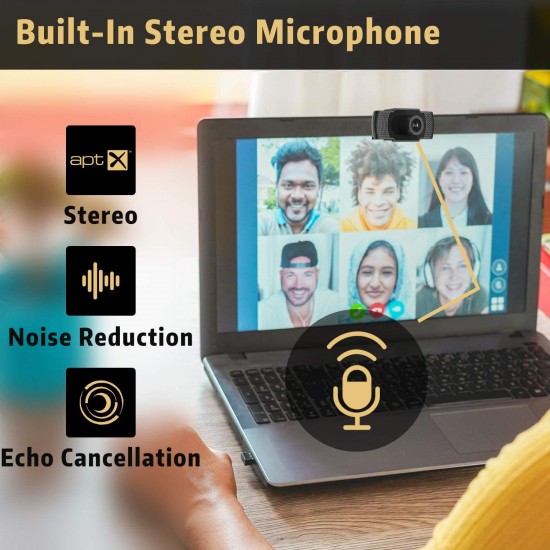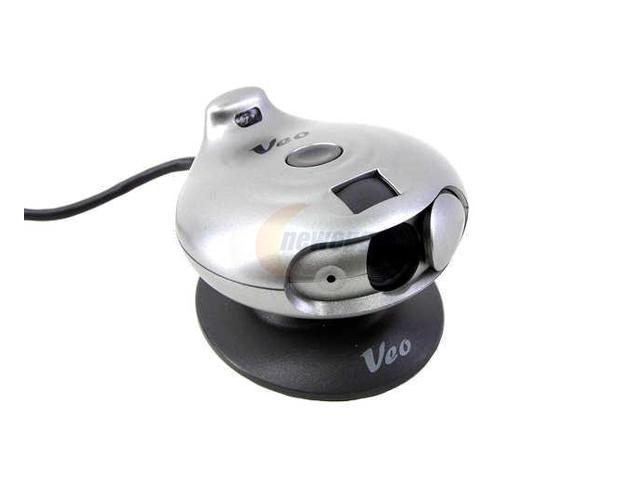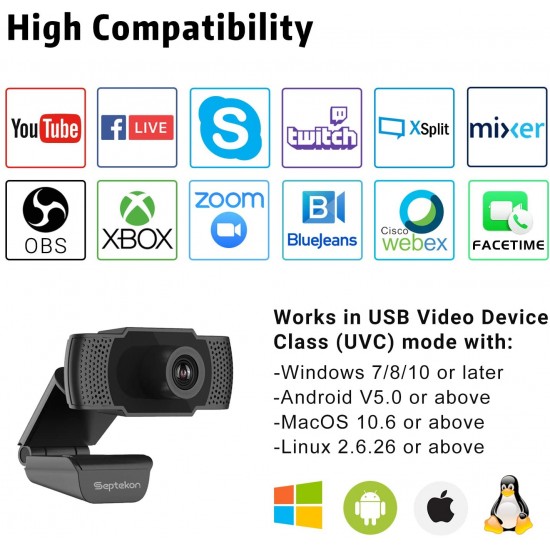Veo Web Camera Drivers For Mac Crack Crystal Report 2013 Sp4 The model is created in Autodesk 3ds Max 2010, rendered with Vray 2.10.01, textures and materials are included. USB 3.0 controller. Graphics card with 24 or 32 bit. Windows 7 (32 & 64 bit), Windows 8 (32 & 64 bit), Windows 10 (32 & 64 bit) DirectX 9.0c or higher. Added several internal interfaces for particular sensors (J003). January 25, 2019 2.9.6. Device driver for all The Imaging Source USB cameras except the 33U, 37U, 38U. Intex it-105wc webcam driver download for windows 7 - How-To - Hardware. Toshiba webcam driver - Forum - Webcam. Intex it-305wc webcam driver download for windows 10 64 bit - Forum - Drivers. Intex webcam driver - How-To - Hardware. Enet webcam driver for windows 10 - Forum - Webcam. We are proud to announce the release of the official version of our EOS Webcam Utility software for Mac OS, which lets you turn your compatible Canon EOS camera into a high-quality webcam using only a USB cable. Features: Works with more of your favorite streaming apps. Now compatible with over 40 Canon cameras.
AI detects critical events like goals, kickoff, corner kicks, and free kicks.
Live-stream your matches with Veo’s app and watch them on the new Veo Live app!
Veo is the complete and affordable camera solution for basketball teams on all levels. The camera records, on its own, games and practices that help you get better on the court.
Set it up, press record, and focus on your team.
Our camera records with two super sharp 4K lenses that capture the action at a wide 180-degree angle in excellent video quality. Want to see how your point guard got caught on a screen, or how your center could have boxed out better? Veo is for you.
Analyze your games. Analyze your practices. Create highlights. Tag players. Provide feedback.
Veo is the all-in-one basketball tool you need to level up your game permanently.
Get better today.
- Veo Live is coming for basketball in 2022.
Veo is the ideal solution to automatically film rugby
When your match is processed, AI automatically detects tries, conversions, and penalties.
Recording and analysing rugby has never been easier!
- Veo Live coming for rugby in 2022.
For your webcam to work you will need support for the connection and support for the actual camera hardware. Those who are already versed in kernels and modules and how to load them should skip to Section 2.2, which addresses support of the connection type. If you know your USB, IEEE 1394 or whatever bus you will be connecting your camera to is already configured and working, you should move on to the list of specific webcam hardware listed in Section 2.3.
Webcam drivers are usually available one of three ways: within the kernel, as a compilable stand alone module, or available as a pre-compiled (packaged) binary driver from your Linux distribution.
2.1.1. Module or In-Kernel?As a rule, often the stock kernel, or working part of the operating system, of your initial installation may already have support for what you need. Your Linux distribution vendor has likely enabled the most common options already, including the bus, or connection type, and drivers for common camera models. The driver exists either as a loadable module or within the already running kernel.
An easy way to tell if the driver is enabled is to use the
...which may yield something like the following, depending on your hardware:
If you don't see it, the particular driver may exist as a loadable module. If you know what that module is named, try using
Note that up until the 2.4 series modules had the suffix
You can get a list of all modules available by typing the following at the command line:
Where
Once you know which module your camera needs you can find out if it is already loaded by typing the following at the command line:
As shown by the prompt above, you will need to have root privilegesto do this.You should get output similar to the following:
Most stock kernels are compiled with

Drivers for specific webcam models, or links to project pages hosting code for drivers, are outlined in Section 2.3. The drivers are usually available one of three ways: within the kernel, as a compilable stand alone module, or available as a pre-compiled binary from your Linux distribution.
If the support for your driver is not found either enabled statically within the kernel or as a module, don't despair. Drivers for numerous models are in the Linux kernel source (available directly from kernel.org source code repository), or in code offered separately from the kernel that can be configured to work with your current setup as oulined in Section 2.1.2. If your webcam driver is available in the kernel source but not enabled as a module or otherwise in your default system, you can either recompile the kernel from the source code you have or obtain a new version of the kernel source, either pre-packaged by your Linux distributor or directly from the previous link (as a so-called
You may find that your webcam is supported by only a kernel patch, by a source-only driver not requiring a kernel recompile, or you may even be lucky enough to have a distribution that makes a pre-compiled and packaged binary driver available for your computer's architecture. The procedure involved in the former is largely beyond the scope of this document and is probably best outlined in the documentation available on the web page of your particular model's driver found in Section 2.3. Some further more general documentation on these processes are, however, addressed in Section 5
2.2. Supporting the Connection Type2.2.1. USB WebcamsIf you have a USB webcam, it is likely a Linux driver has been written for your device.There are two ways of supporting USB devices in Linux.One is the more traditional kernel support, and the other is throughlibusb.For at least one webcam category, the STV0680-based models, working libusb support is recommended, at least according to the Sourceforge page on the subject.
Unless you know your driver requires libusb support, you should probably stick with the more conventional in-kernel support for USB devices beginning in Section 2.2.1.2.
2.2.1.1. LibusbLibusb is a library that allows access to the USB functions inLinux through userspace and without the need to enable kernel supportand insert modules. Most distributions, at this point, are offering libusb in their stablebranches (and some install it by default), so if you don't already havekernel support for USB devices, then you may only have to install thelibusb package in order to access your device.You must have USB device filesystem support enabled in your kernel,which most distributions do.To find out for sure, issue the following at the command line:
You should see (among others):
You may need to mount usbdevfs to enable it and see the devicefiles, which you can do at the command line with
You can obtain the libusb package in
Kernel support is required for USB webcam support if not usinglibusb (outlined above).
For 2.2 and 2.4 series kernels, your USB webcam may require the module
For generic USB bus support in Linux, you will need USB subsystemsupport in your kernel, whether usb-ohci, usb-ehci, or whatever flavorof USB driver your system prefers.USB subsystem support has been present in the Linux kernel since thelate 2.2 series.For a more in-depth discussion of USB support in general, I direct you tothe Linux-usb project site.If you want to find out which modules are loaded, at the command lineor in an xterm, type the following:
As shown by the prompt above, you will need to have root privilegesto do this.You should get output similar to the following:
If you don't have the particular module you're seeking loaded andyou think the module may be available, try loadingit directly (using the usb ibmcam module as an example):
...at which point you should see something like thefollowing:
By placing the entry
IEEE 1394 webcams require an IEEE 1394 PCI card or an IEEE 1394bus port on your mainboard.The IEEE interface has been supported in Linux since the early 2.4-serieskernel.If you are lucky enough to own such a device, generic informationon support of the IEEE 1394 bus in Linux can be found at www.linux1394.org.If you have a kernel older than 2.4.2, you will need topatch your kernel with one of the patches found on this pagematched to your kernel version.In addition, you will require libraw1394.The previously referenced linux1394.org site has a great installationguide.
The IEEE1394Digital Camera List, by Damien Douxchamps, offers an outstandingsummary of the capabilities of IEEE 1394 cameras as well as the currentstatus of support for individual models.
2.2.3. Generic Parallel Port Support for Parport Webcams For 2.2 and 2.4 kernel systems, parallel-port support must beenabled statically or as a module (stock kernels usually have thisenabled by default).You may want to read moregeneric info about parallel-port device support under the Linuxkernel before starting this process.To find out for sure if the module
If you are compiling your own kernel, enable 'Parallel Portsupport'.You should enable 'IEEE 1284 transfer modes', and if you have x86 typearchitecture, you should also enable 'PC-style hardware'.
If modprobe returns an error when you attempt to load the module,note that you may need to determine and supply the hardware address wheninvoking
WARNING: Be sure you have the correct address beforeentering this information at the command line or else your machine maybecome unstable, crash or otherwise implode.
Your parallel port should be set to preferably
Note that this information is frequently changing.The Linux-USBDevice Overview site is a great place to look if you have aUSB webcam.Also, you will want to check for your model's homepage at http://www.exploits.org/v4l/.The information compiled below on specific webcam models is from thesame source, so you may find more up-to-date information through theprevious link.If you can't find an entry for your particular hardware, you can findlinks to resources on how to write your own driver!
It is important to note that if your camera isn't listed,the easiest way to find out if your camera is supported is to find outwhat chipset is used in its manufacture.
This information is usually present in the specifications published inyour webcam's manual or on the manufacturer's website.
If you can't find your camera model listedand aren't sure what chipset your camera is made with,you should consider searching and/or subscribing to thevideo4linux-list mailing list hosted by Redhat.
2.3.1. 3com HomeConnect PC Digital WebcamThis driver is supported with the kernel patch located atthe homeconnectusbproject web page.It may require a kernel recompile after patching depending on yourkernel version.
2.3.2. CPiA based Webcams
Please see the projecthome page for up-to-date information.This chipset has been used in the manufacture of both USB and parallelport webcams including the following:
Aiptek HyperVcam Fun USB (non-OV511 based)
Creative Video Blaster WebCam II USB and parallel-port
CVideo-Mail Express parallel-port
Digicom Galileo USB and Digicom Galileo Plus
Dynalink Digital Camera

Ezonics EZCam (not Pro or Plus)
I-View NetView NV200M
Microtek EyeStar USB
Pace Color Video Camera USB
SuperCam WonderEye
TCE Netcam 310 USB
Terracam USB (non-OV511 based or Terracam Pro)
Trust SpaceC@m Lite USB and SpaceC@m 100
Utopia USB Camera
ZoomCam USB and parallel-port
2.3.3. SE401, SE402 and EP800 based USB webcamsThisproject is a work in progress.The drivers and other useful information areavailable at the project homepage located here.As of writing this, it is necessary to patch and recompile your kernelin order to obtain support for these models.The driver supports the following:
SE401 chipset via the 'se401' driver:

Aox SE401 camera
Philips PCVC665 USB VGA webcam 'Vesta Fun'
Kensington VideoCAM PC Camera (Models 67014-67017)
Veo Web Camera Drivers For Mac Os X
SE402 and EP 800 chipsets via the 'epcam' driver
Spypen Actor
Rimax Slim Multicam
Concord Eye-Q Easy
Creative PD1001
Chicony DC-100
Endpoints SE402 and EP800
2.3.4. OmniVision based WebcamsThis category includes amultitude of webcam and video-capture devices manufactured by Omnivision,including the OV511(+), OV518(+), OV6620, OV6630, OV7610, and OV7620AE.The project homepage is here.Supported models include:
Aiptek HyperVcam Home and Mobile
Amitech AWK-300
I-view NetView NV300M
TEVion MD9308
Intel Me2Cam
Dlink DSB C100, C300
Hawking Tech. UC-110, UC-300 and UC-310

Puretek PT-6007
Alpha Vision Tech AlphaCam SE model AC-520
Creative Labs WebCam model PD1001 with OV518 chipset
Creative Labs WebCam 3, WebCam Go, Webcam Go Plus
Elecom UCAM-C1C20
Elta WEBCam 8211 PCC
Ezonics EZPhone Cam
Philips ToUCam XS (old version with OV518)
LG Electronics LPC-UM10
Lifeview various USB Life TV models
Genius VideoCam Express
AverMedia Intercam Elite
Maxxtro Cam22U
MediaForte MV300, PC Vision 300
Terratec TerraCam PRO and some TerraCam models
OmniVision (except those with OV519)
TRENDNet TV-PC301
Trust Sp@ceC@m USB
Lifetec LT9388
BestBuy EasyCam U
Maxell Maxcam
TCE NetCam 310u
Medion MD9388
Webeye 2000B
Suma eON
Prochips PCA-3100
Ezonics EZ USB Cam II (the OV511+ models)
Waytech I-Pac VIC-30
Zoom Telephonics ZoomCam III USB (model 1598)
2.3.5. Logitech (formerly Connectix) QuickcamSupportThe QuickCam VC USB and parallel port modelwebcams are supported by the driver offered here.A kernel patch and recompile are necessary for support of this model.
The Quickcam driver is represented by two different projects that offer two different flavorsof driver for certain Quickcam models, both of which are stand-alonedrivers that do not require a kernel patch or recompile.The qce-ga and qc-usbdrivers support the following models:
Logitech (earlier models of) Quickcam Express
Quickcam Web
Legocam
Dexxa Webcam
Labtec Webcam
The qc-usb driver is more experimental but reportedly works betteron some models such as the Quickcam Web. Also, I have recieved correspondence that newer versions of the Logitech Quickcam Express no longer work with the above drivers; instead this page offers an experimental driver that claims to support the newer model.
Note to Redhat users: The qce-ga driver doesn't compile properly using themodified kernel source provided in Redhat 9, but a fix is available here.
Some Logitech camera models are supported by the Philips driverin Section 2.3.8.
2.3.6. ICM532 Based WebcamsOne driver for this chipset, homepage here, is now merged into the 2.6 kernel source; the other is (per the developer's own description) experimental and available here. Either or both claim to support the following models:
IC-Media Corp Pencam
Newer versions of the Logitech Quickcam Express
Newer versions of the Labtec Webcam
Biolux 654 microscope
Ezonics EZCam USB II (uvt8532)
Veo Web Camera Drivers For Mac Download
Ezonics EZCam USB III
TerraCam USB
Stick Webcam
Mini WebCam
Tucan PenCam
Che-ez! Webbie
SNAKE EYE SI-8480/8481
PC CAM CP03
WEB Camera PBC0006
Clipcam
2.3.7. NW802 Based WebcamsThis chipset, manufactured by DIVIO, is supported by the driverfound here.The models supported include the following:
BTC SurfCam CMOS300k
Mustek WCam 300
Logitech QuickCam Pro USB (the earlier 'dark focus ring' model)
2.3.8. Philips USB Webcams Because of the expiration of the Non-Disclosure-Agreement between Philips Corporation and the former maintainer of the
Philips models supported by the above include the following.
PCA645VC
PCA646VC
PCVC675K Vesta, Vesta Pro and Vesta Scan
PCVC720K/40 ToUCam XS, ToUCam Fun, ToUCam Pro and ToUCam Scan
Askey VC010
Creative Labs Webcam 5, Pro Ex
Logitech 3000 and 4000 Pro, Notebook Pro, and Zoom
Samsung MPC-C10 and MPC-C30
Sotec Afina Eye
Visionite VCS UM100 and UC300
2.3.9. SPCA50X USB Camera Linux DriverInformation regarding this chipset can be found here, and is under heavy development and includes partial or complete support for the following models:
Kodak DVC-325 and EZ200
Creative PC-CAM 300, 600, 750
Genius VideoCAM Express V2
Micro Innovation IC 200/IC 150
Logitech ClickSmart 310, 420, 510, 820 and Cordless models
Logitech Pocket750
Benq DC 1016, 1300, 1500, 3410
Flexcam 100
Aiptek MegaCam, [1.3 Megapixel] Mini PenCam and PocketCam 1.3M Smart
Finet Technology Palmpix DC-85
Pure DigitalDakota
3Com Home Connect lite
Megapix V4
Mustek gSmart: Mini, Mini2, Mini3, LCD 2, LCD 3
Digital Dream Enigma 1.3, Epsilon 1.3
Maxwell Compact Pc PM3
Jenoptik models
Minton S-Cam F5
D-Link DSC-350
Trust FamilyC@m 300 Movie
Aiptek Pocket DV, PocketDVII, DV3100+, mini PenCam 2, PocketCam 3M, Pencam SD 2, Pocket DV3500
Hama Sightcam 100
Micro Innovations IC50C, IC400c
FlyCam USB100
Arowana USB Camera 300 K
Intel Easy PC Camera, CS120 (Easy PC Share), PC Camera Pro (CS431), Pocket PC Camera (CS630)
Grandtec V.cap
Sigma-Apo Petcam
2.3.10. STV0680 based Models The USB version of webcams made with this chipset are supported bythe 2.4.18 and above kernel with the
If you have a serial version, the main oneof which is the Scan e-Studio, you should go here.
2.3.11. Winbond w9966cfThis is a driver for the parallel-port interface that supportsthe Philips SAA7111 CCD-control chip as found on the Lifeview FlycamSUPRA webcam. It is included in the late 2.4 kernel series and laterunder the heading 'video4linux' support.The homepage for this project is here.
2.3.12. Xirlink C-it™ HDCS-1000based WebcamsThis driver is for the USB webcams manufactured by Xirlink, IBM(PC Camera) and Veo Stingray model webcams.Support has been in the Linux kernel USB section since 2.2.12.The homepage is at http://www.linux-usb.org/ibmcam.